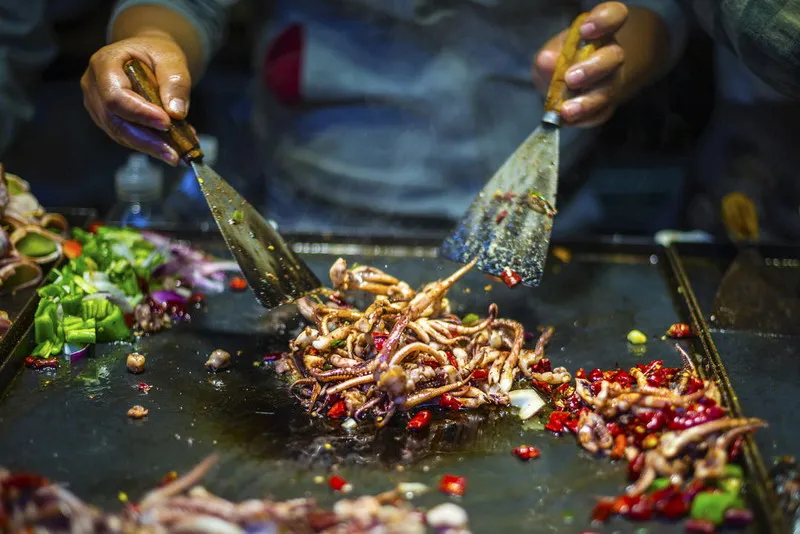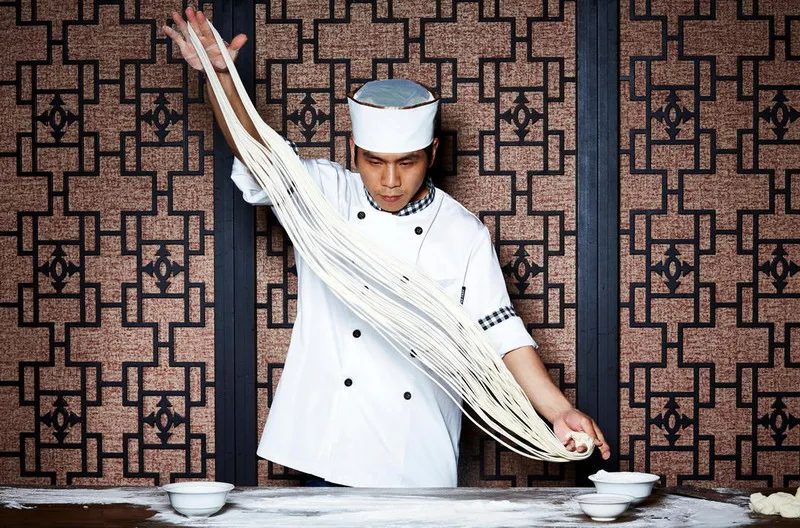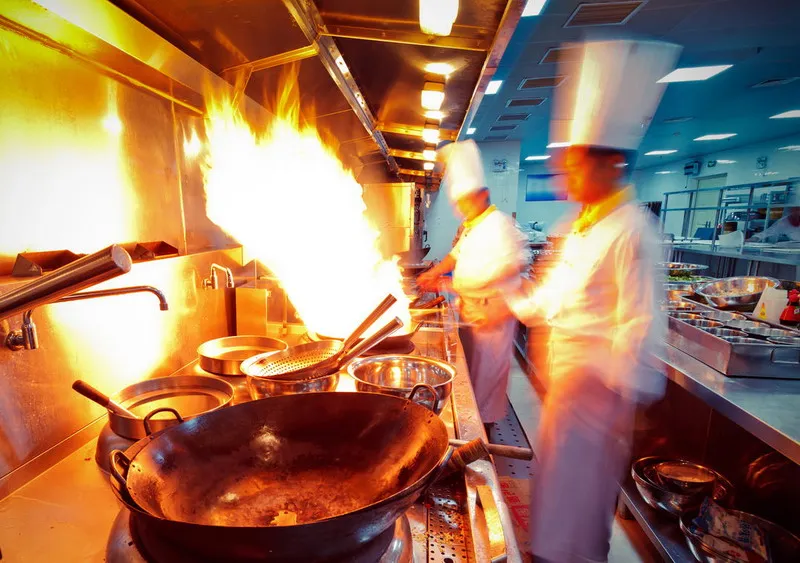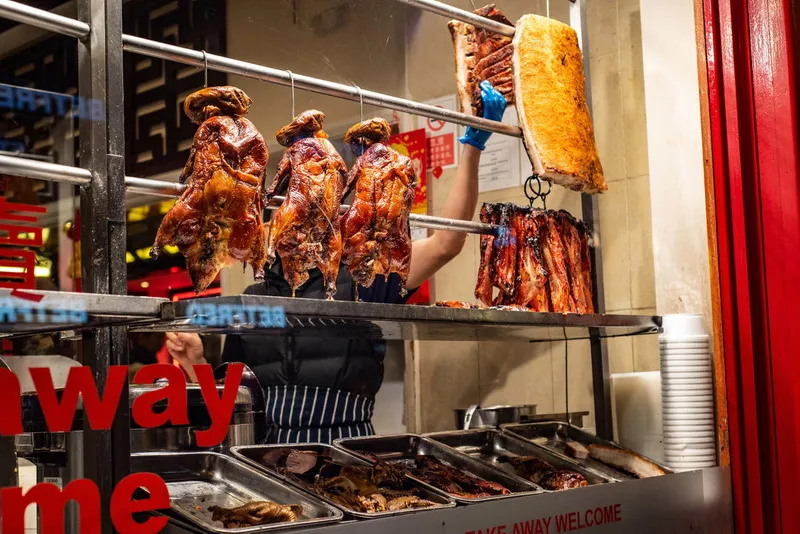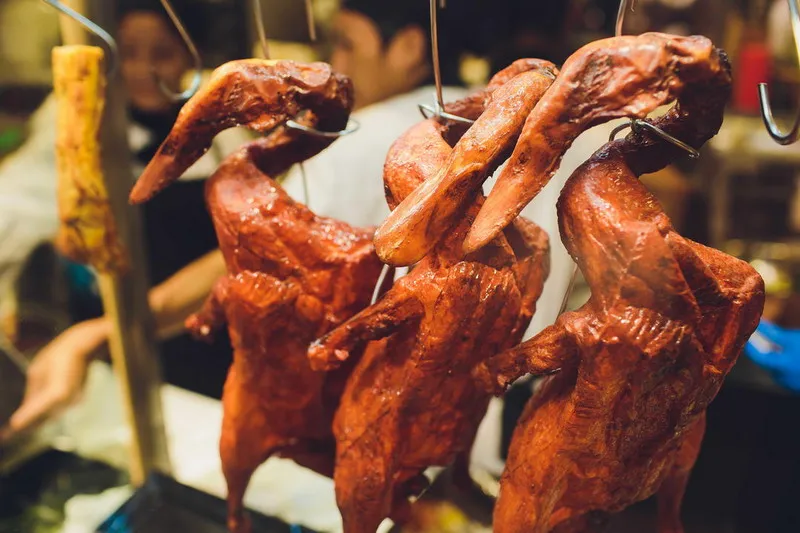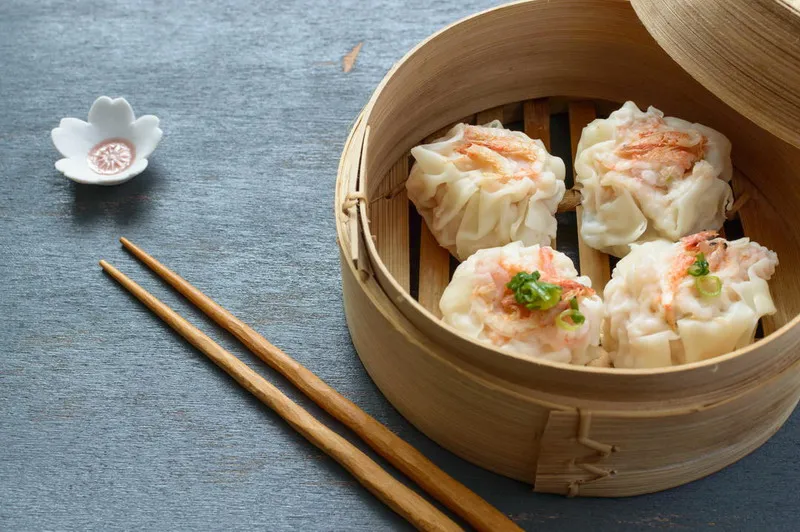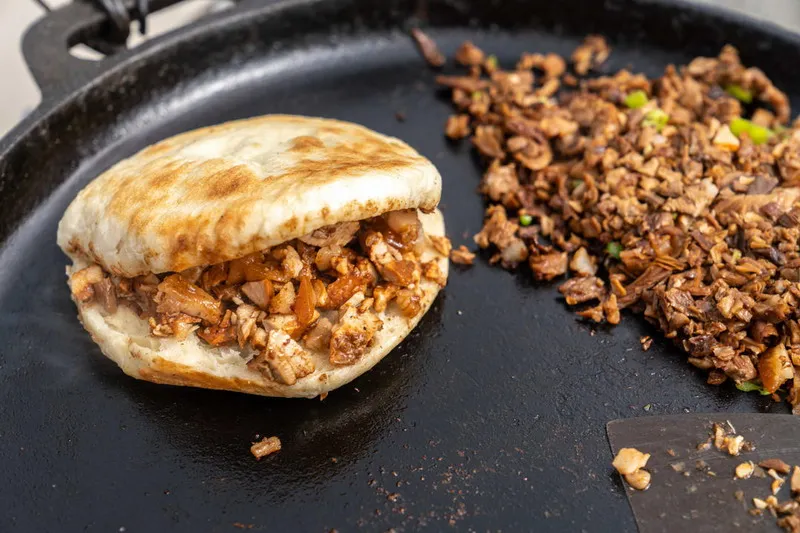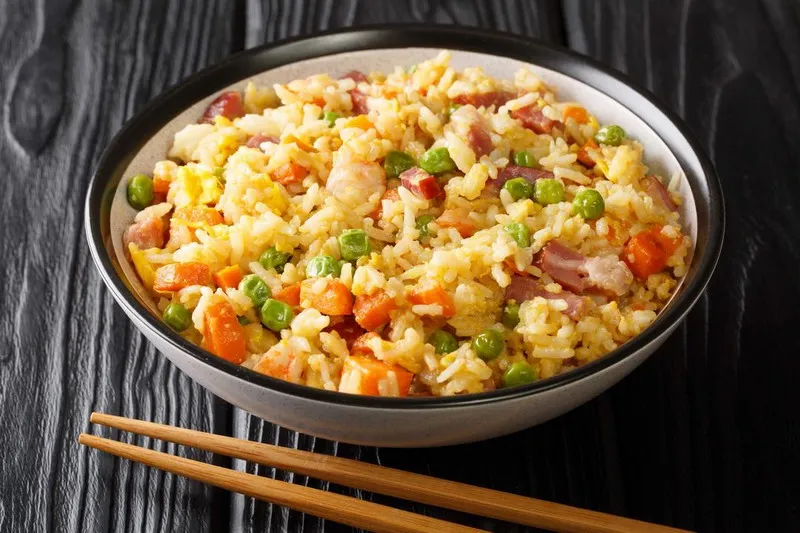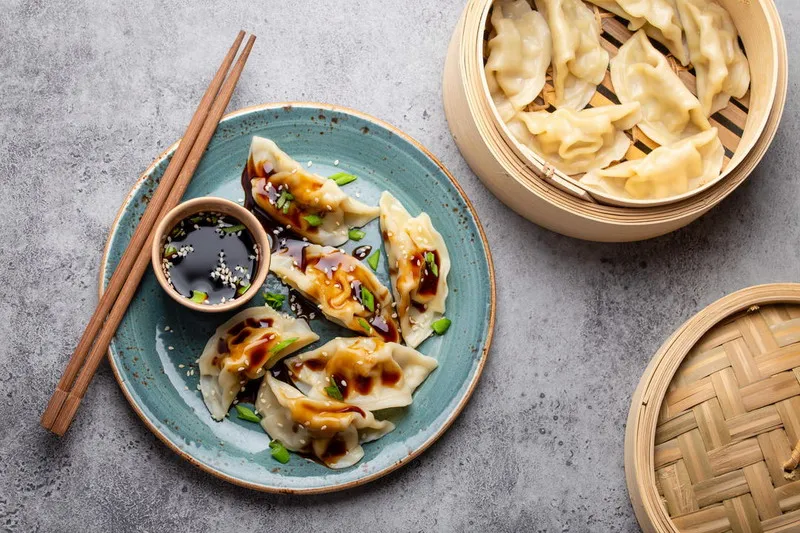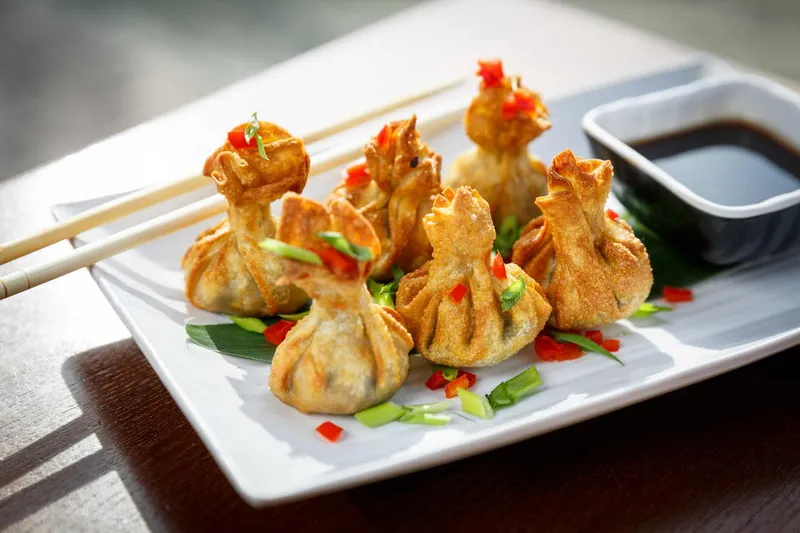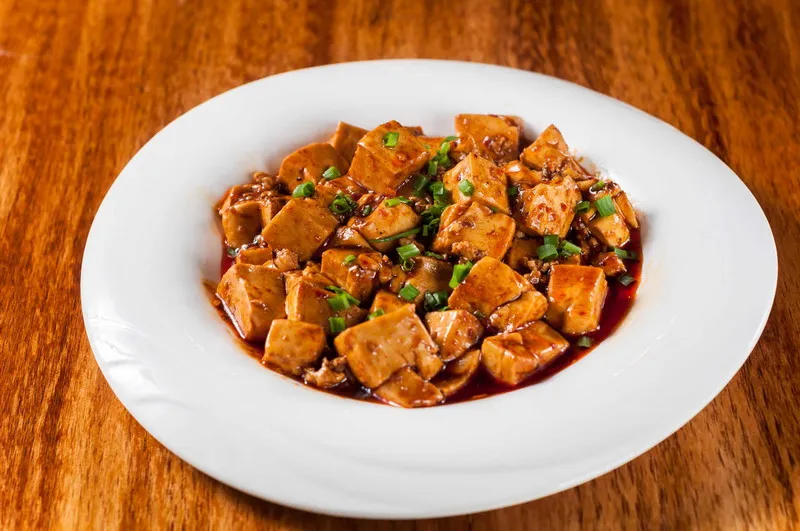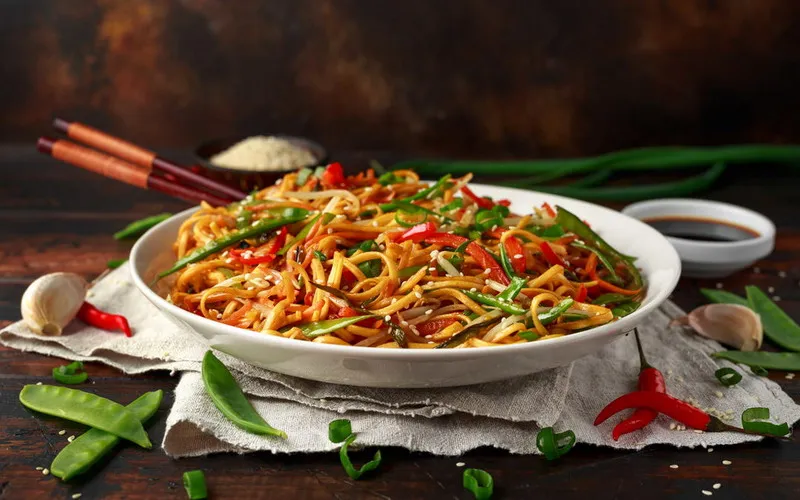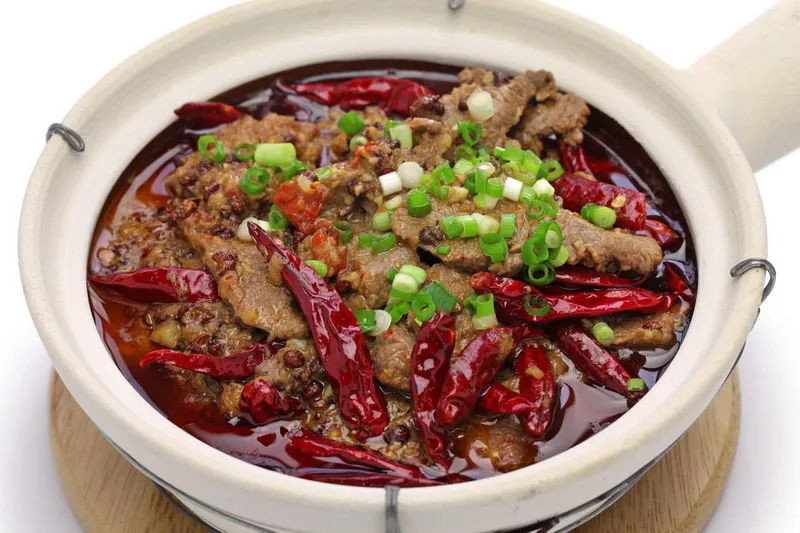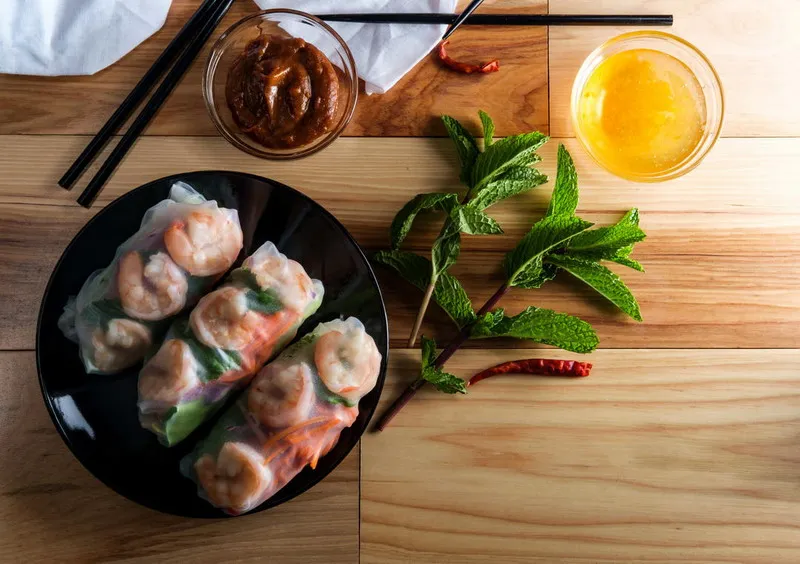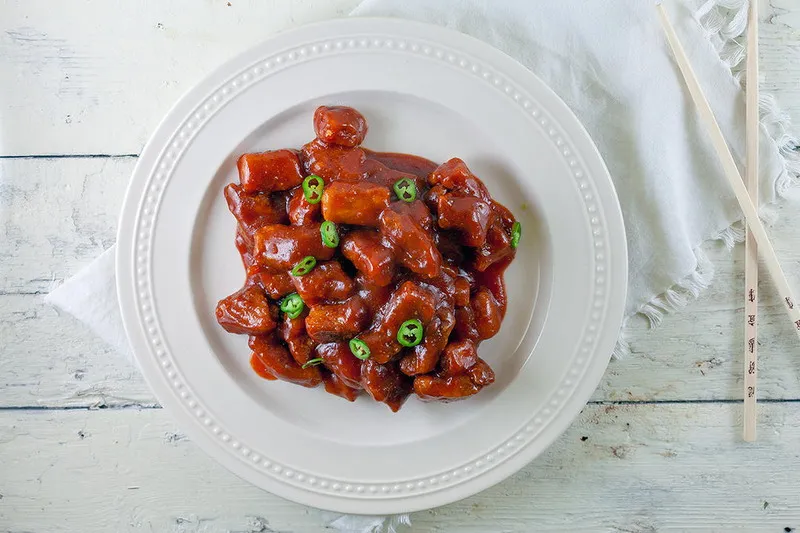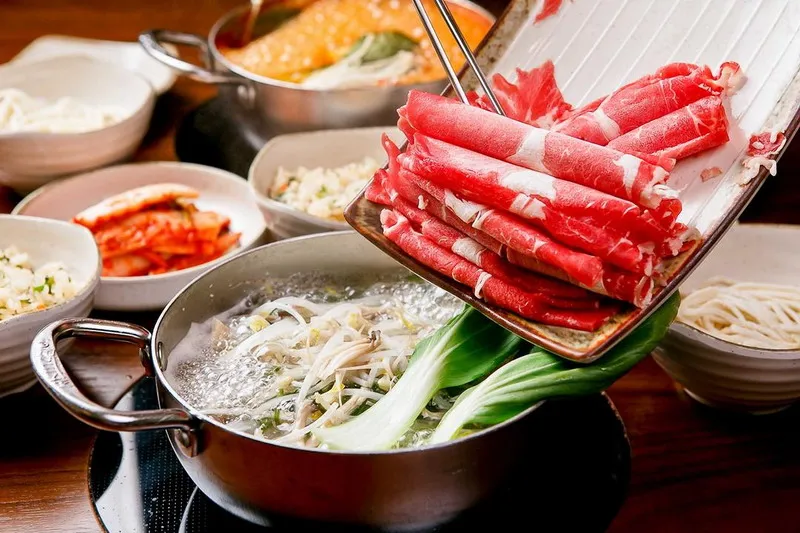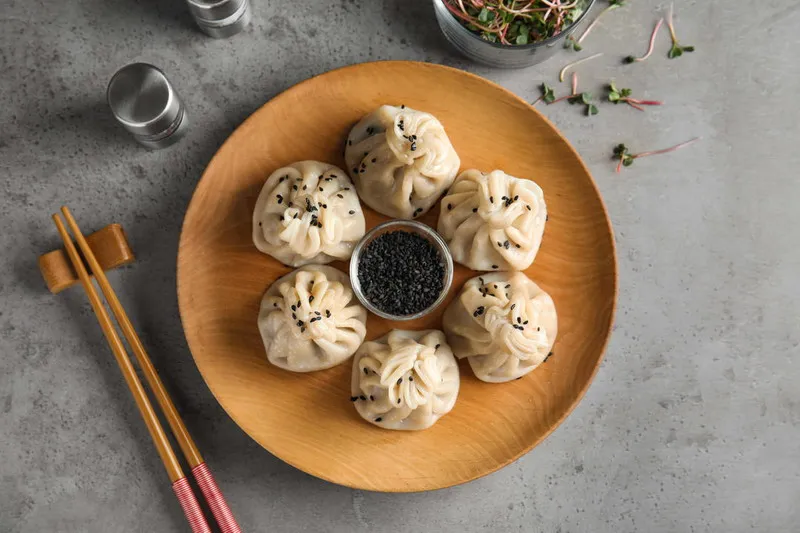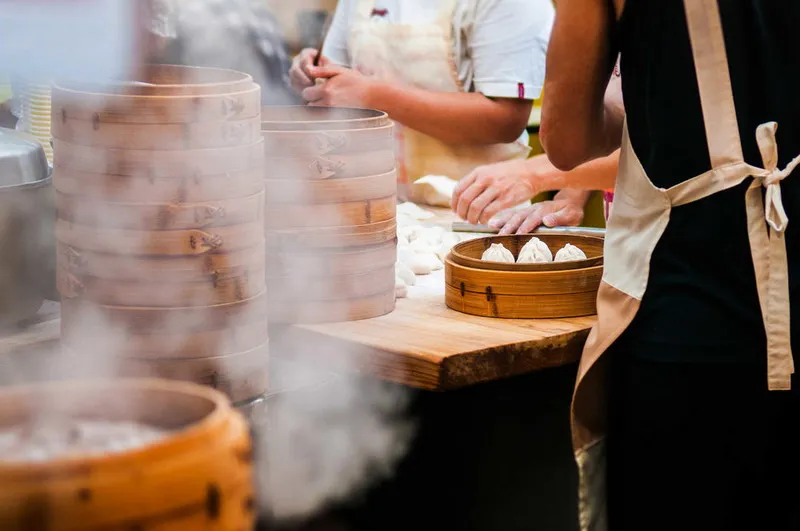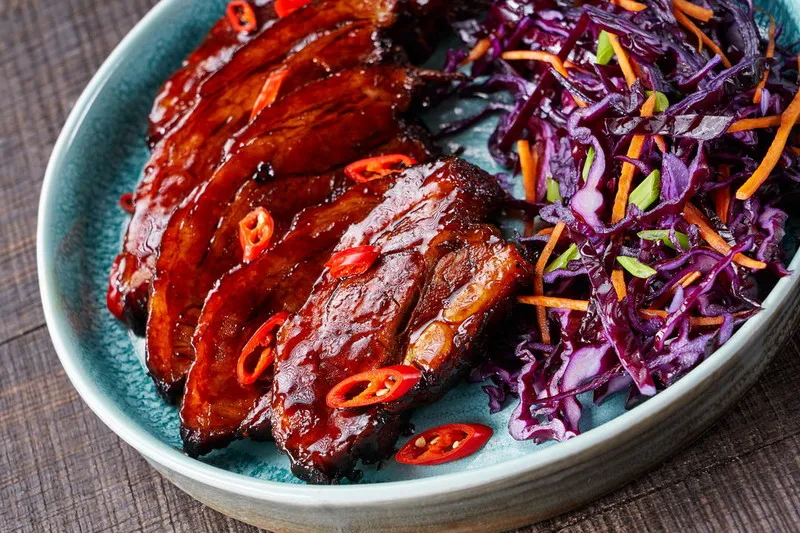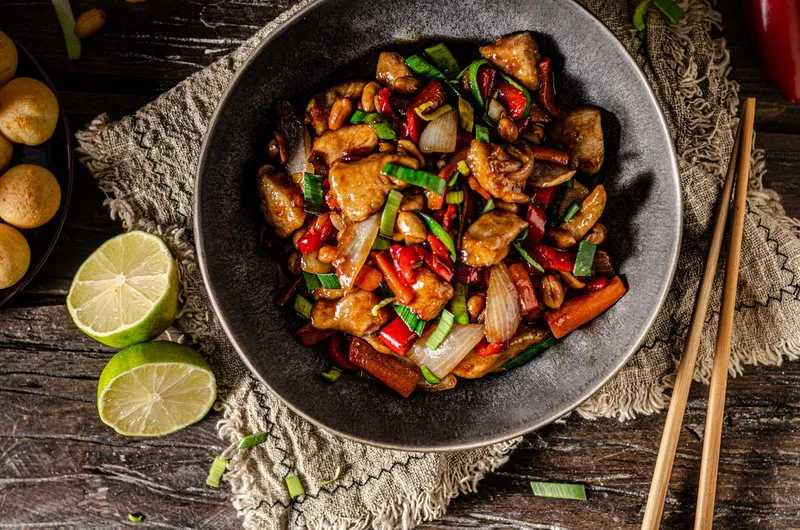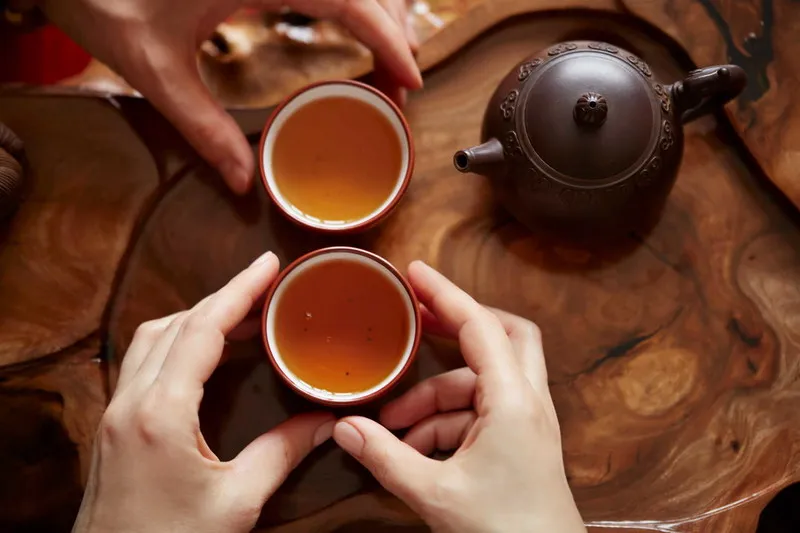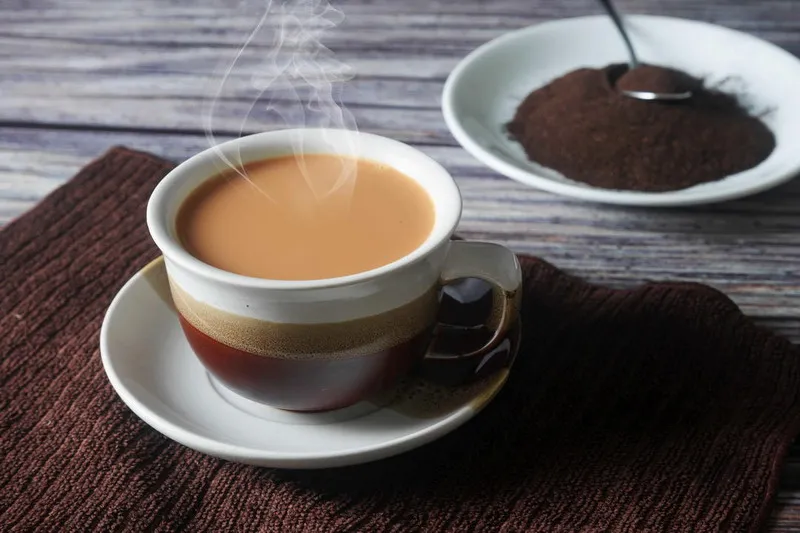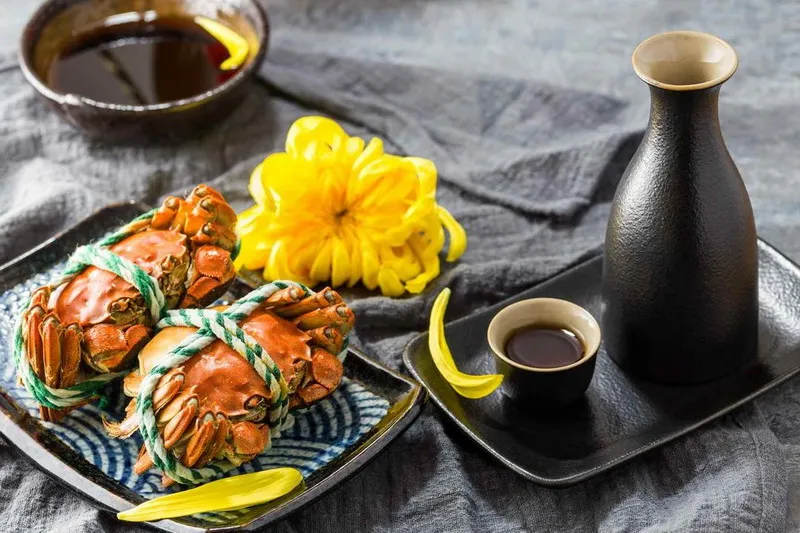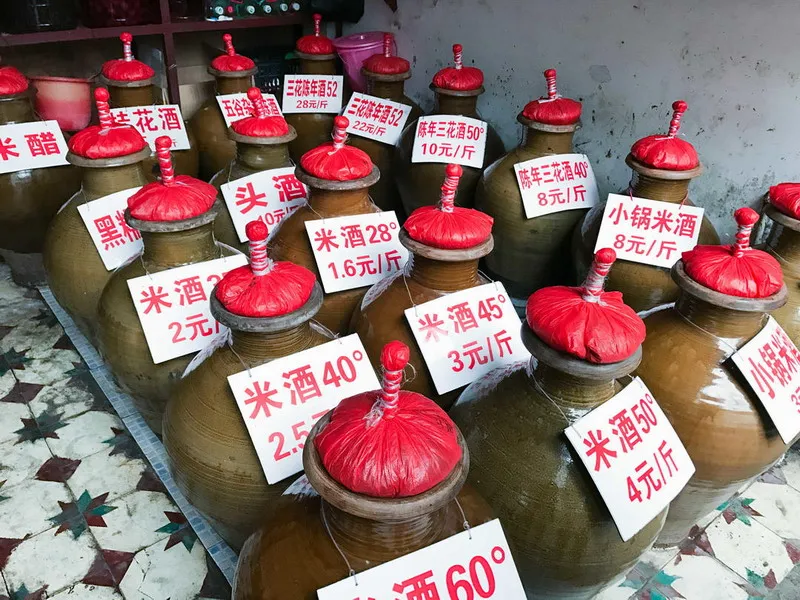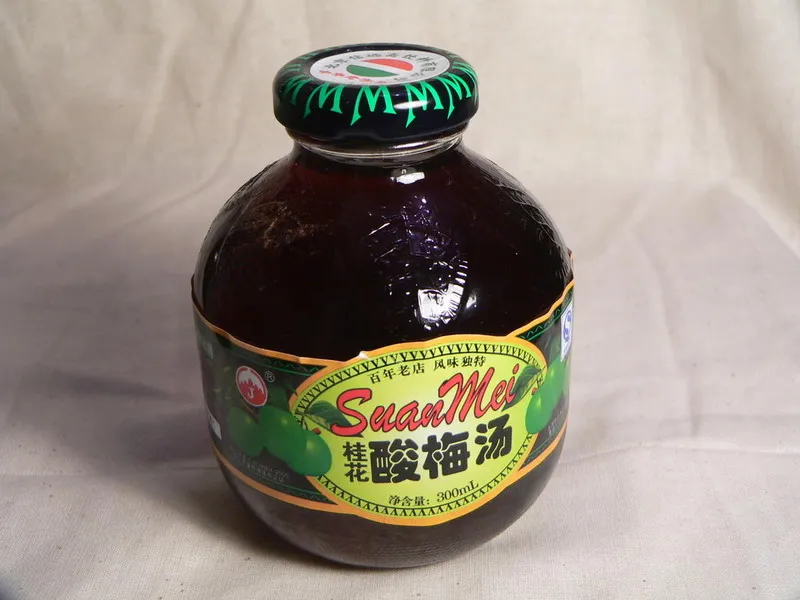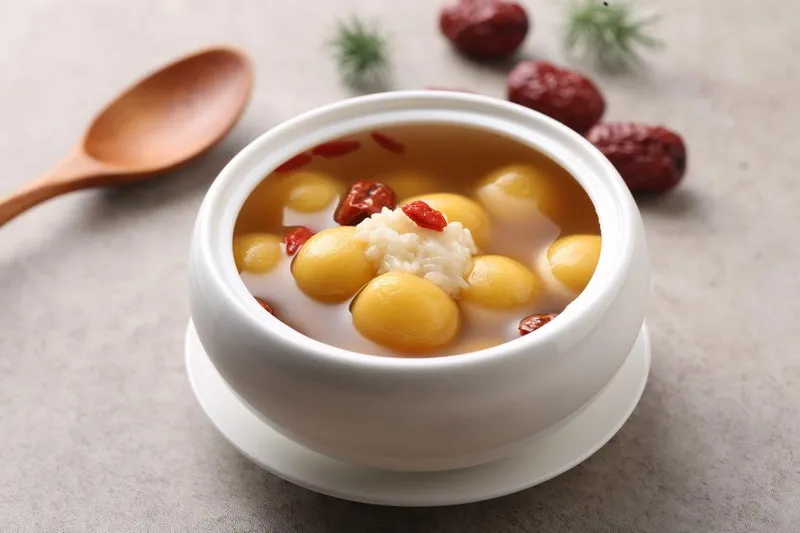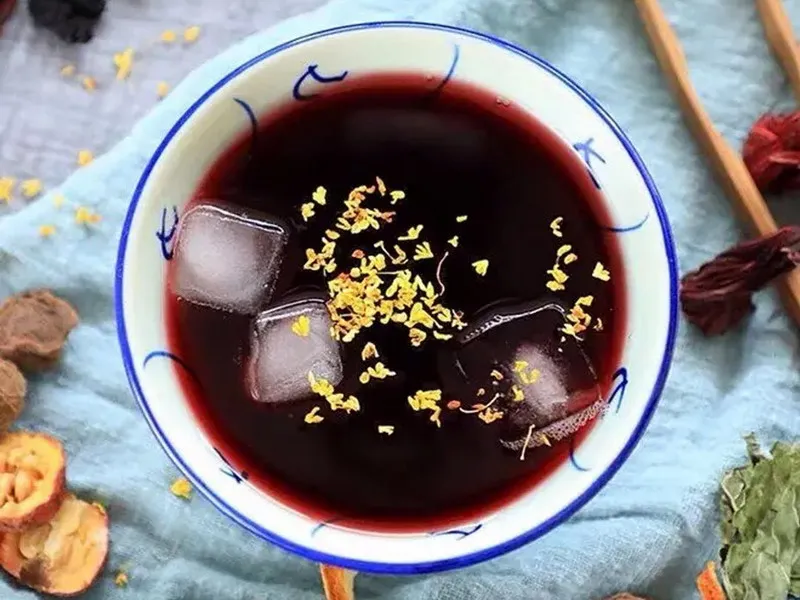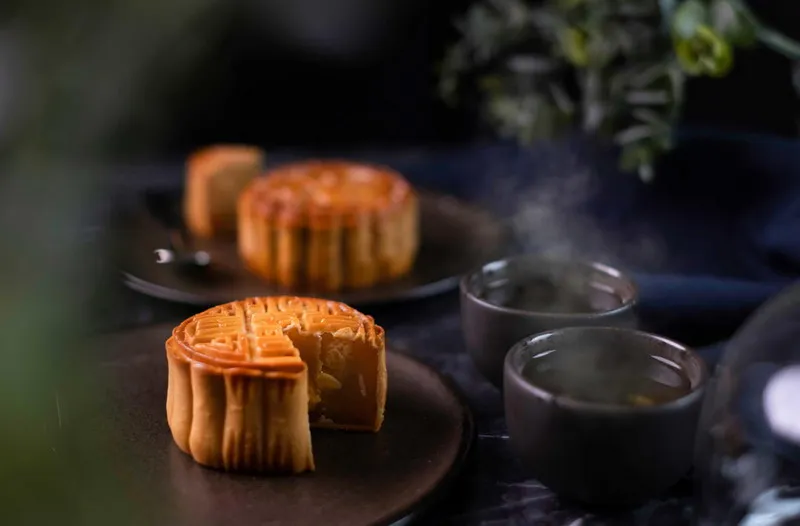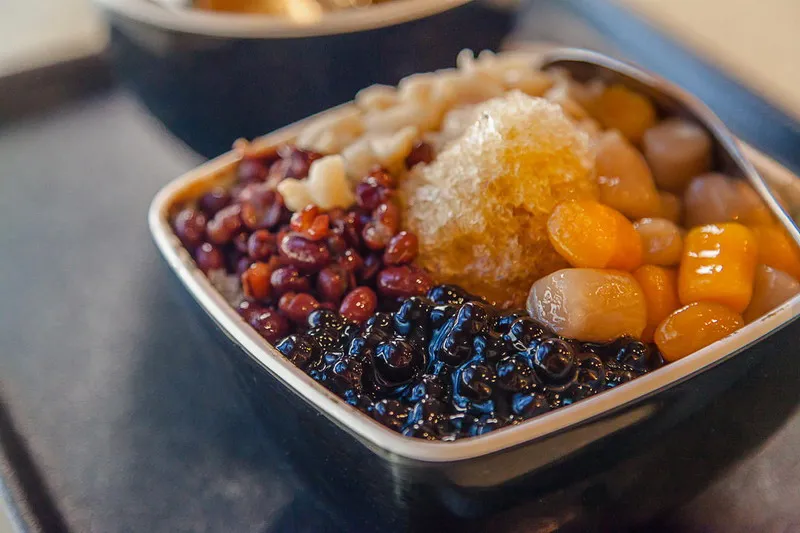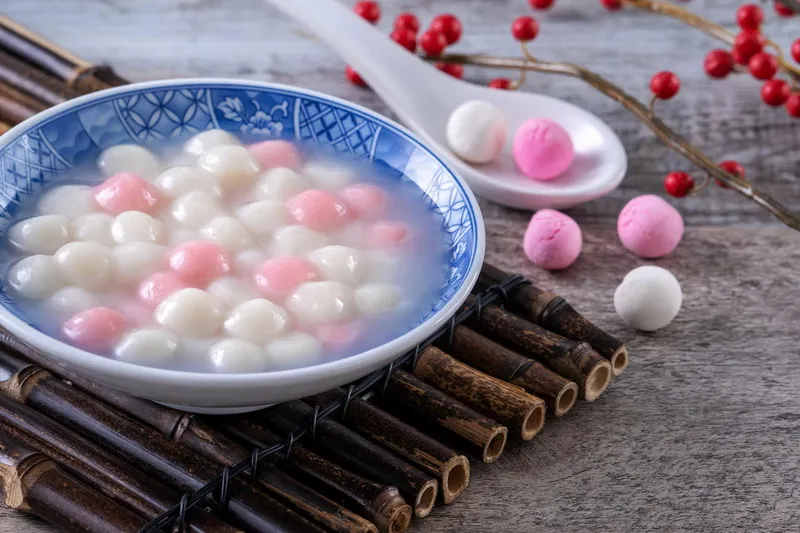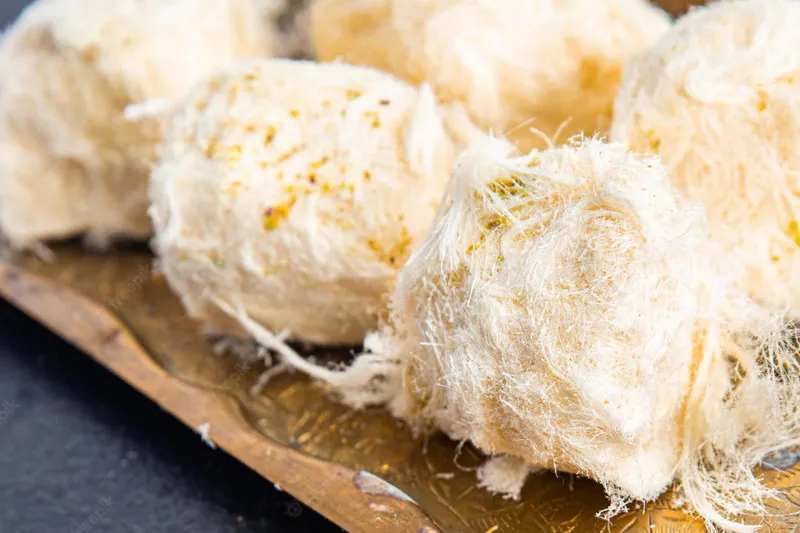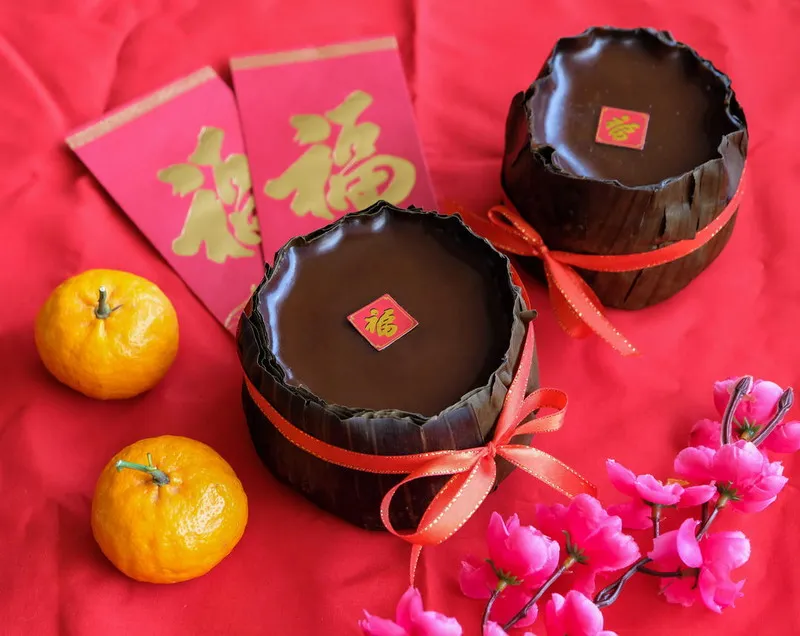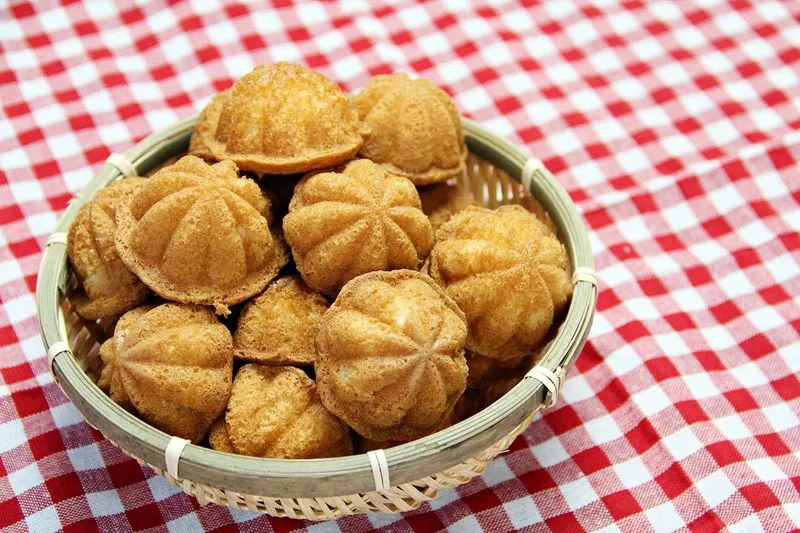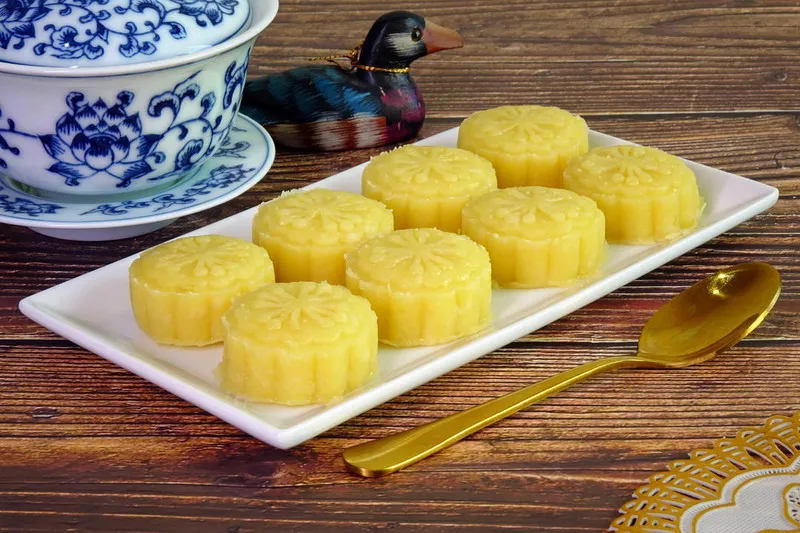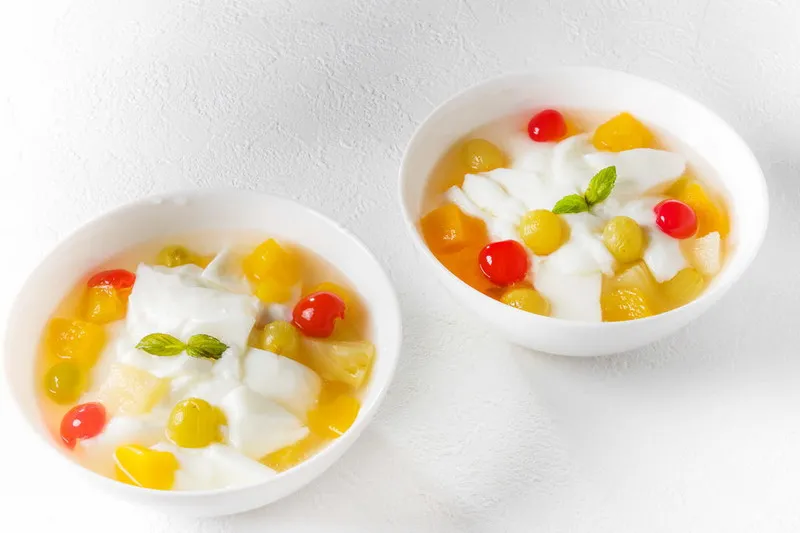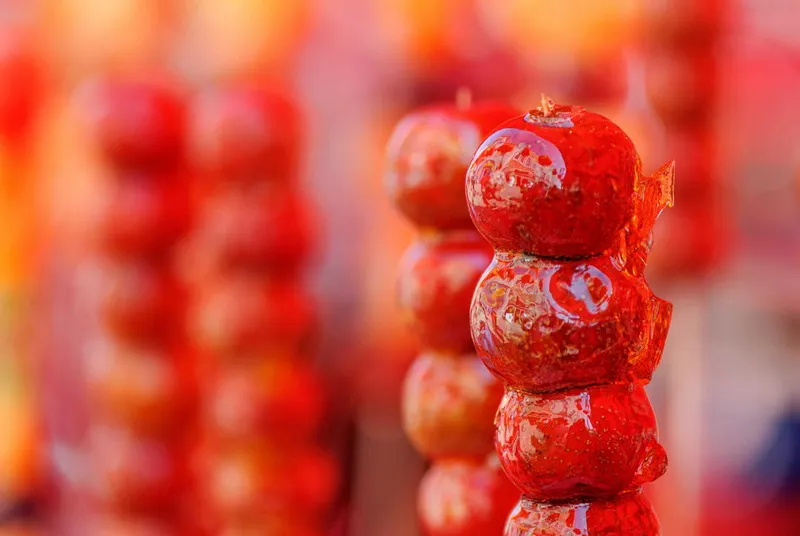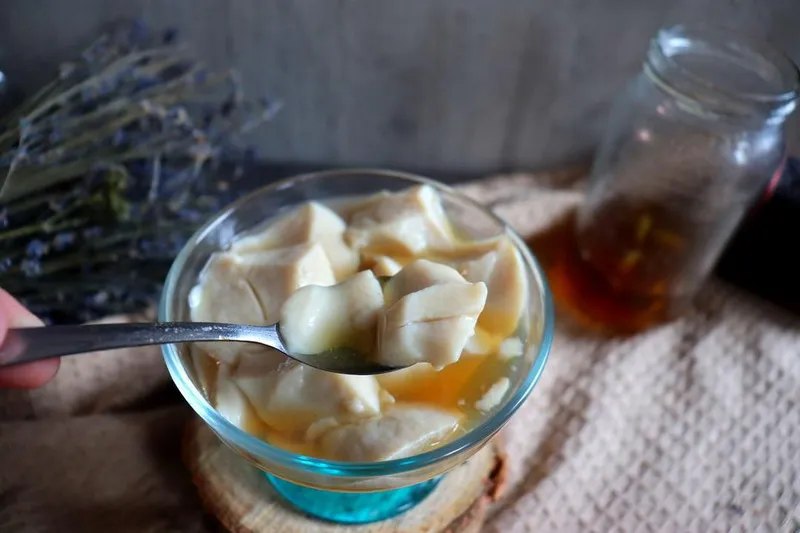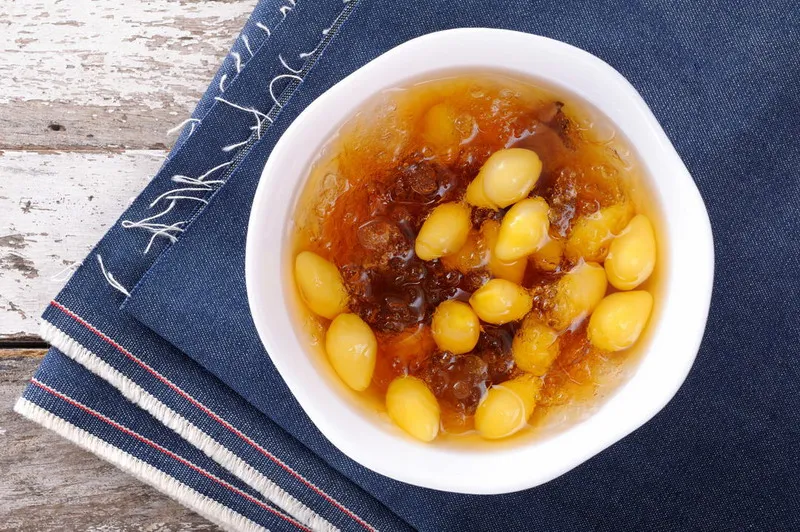China is rightly considered one of the civilizational cradles of humanity. It has given the world many scientific inventions and cultural treasures, and its historical and geopolitical influence simply cannot be overstated. But the real phenomenon of this country is its cuisine.
The famous scientist and archaeologist Kwan-Chi Chang said that the people of China attach great importance to food. And he was absolutely right. Food is truly at the center of every social interaction here. Family members, colleagues, business partners, and top-ranking politicians gather around the set table to eat and communicate. A huge number of religious and everyday rituals in the Middle Kingdom are also associated with food. And in the end, it is Chinese cuisine that is one of the main “agents of influence” on the spread of the culture of the Middle Kingdom far beyond the borders of the country.
Philosophy of Chinese cuisine
The art of cooking in this country has been perfected over five thousand years. The greatest ancient philosopher and thinker Confucius said that food in China is one of the three main conditions for government, along with the army and the trust of the people. It was he who, back in the 6th century BC, established culinary standards that exist in Chinese cuisine to this day, and determined many aspects of table etiquette. Taoism, which was spreading in the country during the same period, influenced the formation and development of the idea that properly prepared food could have medicinal value. All this made it possible to turn the cuisine of the Celestial Empire into high art.
If we summarize the thousand-year philosophy of food culture in China into several theses, they will sound like this:
- Food and its preparation techniques should correspond to the time of year.
- Selecting the highest quality ingredients is one of the key skills of a good cook.
- Each dish has its own history and rituals for its consumption, which an educated person should know in order to fully enjoy it.
- Medicine and food come from the same source.
- Perfect cutting of ingredients is the basis of proper cooking.
- The balance of five tastes – sour, sweet, bitter, spicy and salty – allows you to create harmony in the dish.
- It is worth choosing the simplest and most rational culinary technique that will preserve the nutritional value and natural taste of the products.
- Huohou – Controlling cooking temperature and time is the key to a cook’s success or failure.
- The aesthetics of food presentation are as important as its taste.
The main regional cuisines of the Middle Kingdom
The territory of China is vast, very diverse in its geographical characteristics and is located in four climatic zones – equatorial, tropical, subtropical and temperate. Therefore, in different parts of China, residents have access to unique local ingredients for cooking, and there are also special preferences in combinations of tastes and the choice of spices, culinary customs and traditions.
Among dozens of regional cuisines of the Celestial Empire, it is customary to single out 8 of the most influential and famous.
- Cantonese is the most popular and widespread outside of China. The dishes prepared in Guangdong and Hong Kong are characterized by fresh, mild and natural flavors. A variety of sauces are actively used here to add sweet notes to the food.
- Szechuan is incredibly popular in China itself. It is famous for its hot, spicy and rich dishes, which always contain a lot of chili, garlic, ginger and, of course, Sichuan pepper.
- Fujian (Ming cuisine) – famous for dishes prepared from wild plants and mushrooms, as well as seafood. Its masters are recognized as virtuosos of cutting and creating textures, and the local menu includes many broths and soups.
- Shandong (Lu cuisine) – common in the east and northeast of the country. Its tastes are umami (inherent in high-protein foods), salty and sweet and sour. Many wheat dishes are eaten here, as well as seafood and soups.
- Jiangsu (Su cuisine) is very diverse. It is characterized by an exquisite and colorful presentation of dishes, the desire to preserve the original taste of the ingredients, as well as a large amount of fish and seafood on the menu.
- Anhui is especially attractive because its recipes contain a lot of wild plants, and therefore fresh flavors. The most common cooking methods here are stewing, simmering and steaming. Fried food is served quite rarely.
- Zhejiang (Zhe cuisine) – actively uses bamboo shoots, freshwater fish and seafood. Her menu includes many minimally processed dishes, delicate and light flavors and crunchy textures.
- Hunan is the most spicy, hot and sour. The main seasoning here is chili pepper. Its cooks are not shy about the abundance of smoked meats, as well as pickled and canned vegetables.
Traditional Chinese dishes that have conquered the world
The variety of dishes in China is so great that it can shock an unprepared traveler. It’s hard to choose when each item on the menu sounds even more appetizing than the previous one. But traditional Chinese dishes, with a rich palette of flavors and ancient history, are known and loved by the whole world.
Peking duck bei jin hao (Beijing Kaoya)
Peking duck is the favorite Chinese food of all foreign tourists coming to the capital of the Middle Kingdom. In the Middle Ages, she was the star of imperial cuisine. The first restaurant specializing in this type of meat appeared in Beijing in 1416. And in the 1970s, Beijing Kaoya received the status of a national dish to welcome foreign guests.
It takes three days to prepare Peking duck, and eating it is a real ritual. The cook serves the bird whole to show off its perfectly cooked, crispy skin. Next, in the presence of guests, it is cut into 120 thin slices. They are eaten one at a time, placed on a translucent rice pancake, adding cucumber cut into long strips, shallots, sauce and rolling into a roll. Visitors can serve the remaining parts of the duck in broth with Chinese cabbage and soft tofu.
Dim Sum
Dim sum is not a specific Chinese dish, but a whole category of them. This is the name for light snacks, laid out on separate plates in small portions, which are usually consumed with morning or afternoon tea. This tradition originated in the city of Guangzhou and is especially popular in southern China. There are even cafes and restaurants that only serve dim sum. There are more than a thousand similar Chinese snacks. These can be different types of dumplings and steamed buns, pies, tarts and other pastries, rolls with sweet or savory fillings, seafood, rice with several filling options, meat (for example, fon zhua chicken feet), beautifully served fruits, vegetables, small desserts .
Chinese hamburger Rou Jia Mo
The Chinese hamburger zhou jia mo claims to be the oldest such dish on the planet. His recipe appeared in Shaanxi province during the Qin Empire (221–206 BC) and spread throughout the Celestial Empire. An easy-to-make and satisfying meal, the crispy bai ji mo bun is cut open and filled with succulent pieces of braised pork belly. The unique taste is given to it by the special seasonings with which the meat is cooked. Rou Jia Mo is often sold as street food and makes an excellent snack.
Chao Fan Fried Rice
Chow fan is one of the most common Chinese dishes. And the fact that all the housewives of the Celestial Empire prepare it from the remains of boiled rice and everything that was found in the refrigerator does not at all prevent it from occupying an honorable place in the menu of a huge number of restaurants. The main ingredients of chow fan in the classic version, in addition to rice, are finely chopped pieces of meat and vegetables, to which eggs, soy sauce and garlic are added during frying in a deep frying pan.
But the truly iconic version of this dish is Yangzhou fried rice, which includes seafood (crab meat, shrimp, sea cucumber and scallops), pork, duck or chicken, eggs, carrots and bamboo shoots.
Jiaozi dumplings
Jiaozi dumplings are incredibly popular in Chinese cuisine. There is a theory that their recipe was invented at the beginning of the 3rd century by one of the most prominent doctors of the Han Dynasty – Zhang Zhongjin. He used this simple and nutritious dish to restore strength and warm the poor who were cold and had frostbitten ears in winter. That is why jiaozi have such a unique shape, resembling an ear.
Now dumplings are not a seasonal food, but they are a traditional Chinese food during Lunar New Year celebrations. The most common fillings for jiaozi are minced chicken, beef, pork, shrimp and fish, which are mixed with various vegetables. Dumplings are boiled, steamed, deep-fried, pan-fried, and served as dumplings in soup.
Wontons
Wontons are a type of Chinese dumpling that originated during the Tang Empire (618-907 AD). And in the 12th century, the custom arose of eating them in honor of Dongzhi, the winter solstice holiday. They are prepared from very thinly rolled wheat dough with a small amount of filling. Moreover, each region of China has its own recipe and shape of wontons.
In Guangdong, dumplings are filled with a mixture of minced shrimp and pork and served in a flavorful broth with thin egg noodles and leafy vegetables as a side dish. In Hong Kong, wontons are fried in oil until crispy. In northern China, the dough is filled with bok choy and minced red meat. In Shanghai, it is made from pork and the leaves of a plant called shepherd’s purse, and the dumplings are served in chicken broth.
Ma Po Tofu
Ma po tofu is a popular Sichuan dish with a distinctive hot and spicy flavor. Its name is a funny play on words, since “ma” is translated from Chinese as “pockmarks”, “po” – as “grandmother”. This means Ma Po Tofu is “pockmarked grandma’s tofu.” The dish is made from silky medium-hard soy cheese, cut into cubes, and finely chopped beef or pork. And its main secret is its thick dark red sauce. It contains Doubanjiang paste, fermented black soybeans, chili oil and flakes, garlic, ginger, rice wine and, of course, Sichuan pepper, which has the property of numbing the tongue and reducing its sensitivity to spicy seasonings. The hot dish is sprinkled with green onions before serving.
Chow mein noodles
Chow Mein means “fried noodles” in Cantonese. And this is another dish that can be found with equal success in the kitchen of any resident of the Middle Kingdom, and on the menu of a popular restaurant far beyond the country’s borders. Egg noodles are boiled until half cooked, cooled and fried until golden brown with a variety of fillings. Most often it is chicken, beef, pork or shrimp, tofu, vegetables, bean sprouts and green onions. And for an expressive and piquant taste, spices, soy and oyster sauces, sesame oil and sugar are added to the dish.
Sichuan Pork Shui Zhu Rou Pian
Shui zhu is the name of a dish creation technique in Sichuan cuisine that is used for meat and fish. To prepare shui zhu rou pian, take a pork loin or tenderloin, remove excess fat and cut it across the grain into small pieces. They are coated with a mixture of egg white and starch and lowered into simmering water for 20-30 seconds without stirring. Then the meat is removed, placed on top of boiled vegetables and seasoned with chopped garlic, chili, Sichuan pepper, sesame seeds and green onions. And finally, pour over highly heated vegetable oil in a frying pan. Szechuan pork cooked this way is incredibly tender and juicy.
Spring rolls (Chun Juan)
The history of this dish goes back more than three thousand years. Since ancient times, thin, almost transparent pancakes made from rice flour filled with vegetables and herbs freshly picked in the new year were eaten on the first day of spring, which Chinese astrologers determined by the cycles of the Sun. Over time, the dish turned from seasonal to everyday. But the story is preserved in the title. Its international version (spring roll) is called Chun Juan in Chinese and literally means “spring roll”.
Spring rolls are prepared in all regions of China, but they are especially popular in the south of the country. In addition to vegetables, minced meat, mushrooms, seafood and sweet red bean paste can be used as filling. One way to prepare them, more common in Hong Kong and Macau, is to fry them in a pan or deep-fry them. The rolls are served with dipping sauce.
Sweet and sour pork Tang Cu Li Ji
Chinese sweet and sour pork is an incredibly popular dish both in the country and abroad. However, most foreigners do not even suspect that there are several variants of it that arose at different times in different parts of the Middle Kingdom. Most often in Chinese restaurants in Europe and America you can find Cantonese-style sweet and sour pork Gu Lu Rou or a dish called Guo Bao Rou. It was invented in 1907 by a chef from the city of Harbin specifically for foreigners living there. And real Chinese food is the ancient and authentic version of sweet and sour pork Tang Cu Li Ji.
All these variations of the dish are united by cooking technology. The meat is cut into pieces, dipped in starch batter and fried in a deep frying pan, first over low and then over high heat. This allows the pork to get a golden crispy exterior but remain soft and tender on the inside. A sauce with sour and sweet ingredients gives the meat a special taste.
Hot pot hot pot (Huoguo)
Hogo is not the name of a dish, but a culinary technique that is incredibly popular in China. A special cauldron with a flat bottom, divided in half by a partition, is installed on a portable stove in the center of the table. A light, light broth is poured into one part of it, and a richer, darker and spicy broth into the second. Bowls with a variety of ingredients for cooking are placed around the cauldron – vegetables, mushrooms, herbs, sprouts, fish, meat, seafood, tofu, noodles and dumplings. The participants of the feast sit around and take turns putting the foods they like into the cauldron.
This is the best Chinese food to enjoy not only a meal, but also socializing in a pleasant company. And if previously Hot Pot was used mainly in cold weather, now it appears on tables in any season.
Baozi filled buns
Baozi are round buns made from yeast dough with a variety of fillings. They can be pork, beef, chicken, pickled Chinese cabbage, fresh vegetables, mushrooms, bean paste, tofu and shrimp. Baozi is usually steamed and eaten dipped in sauce. But some are fried or served as dumplings in soup, as almost every region of China has its own version of this dish. Baozi can be any size. The largest of them are called Da Bao (translated as “big bun”) and are most often sold as a takeaway.
Steamed buns xiaolongbao
Xiaolongbao is a type of baozi that is also often called Shanghai steamed dumplings. The filling for them, in the classic version, is pork jellied meat. Small buns are placed six at a time in a special bamboo basket and cooked in a water bath. During the process, the meat jelly melts and turns into a flavorful broth. Xiao long bao is served in the same basket, and you need to eat it in a special way. First, bite off the edge and drink the soup (you can use a straw for this), and then enjoy the rest. In addition to pork, buns can be filled with beef, crab meat, shrimp and other seafood, as well as vegetables.
Pork Char Siu
The name of this dish means “fork fried” in Cantonese, which perfectly describes the process of making char siu. Long strips of pork (a favorite Chinese meat) are skewered on special forks and finished in the oven or grill. And to give the dish its characteristic red color, aroma and taste, it is coated with a glaze made from a mixture of honey, spices, red fermented tofu, hoisin sauce, dark soy sauce and rice wine. The traditional side dish for Char Siu is rice or noodles. The meat prepared in this way is also used as a filling for baozi.
Kung Pao Chicken
Kung pao chicken is a constant participant in any ratings and lists of the most popular Chinese dishes. Its recipe was invented in the second half of the 19th century by the governor of Sichuan Province named Ding Baozhen. During the cooking process, the chicken fillet is cut into small pieces, marinated in a mixture of cooking rice wine and starch, and fried in a wok with red chili peppers and peanuts. Spices and sweet and sour sauce are added to the dish, making its taste rich and spicy.
Main drinks in Chinese cuisine
In China you can find a huge number of alcoholic and non-alcoholic drinks. They perfectly complement local cuisine or can be eaten on their own. Some of them are authentic, and some are borrowed from close or distant neighbors and successfully adapted into food culture. There are also drinks that have come into fashion relatively recently. For example, Bubble tea is incredibly popular among young people – tea with milk and tapioca balls (it is also called “pearl tea”). Or coffee, the production of which in the country began only in 1988, but at the moment the whole world knows about the excellent quality and special taste of Yunnan Coffee. However, we will focus on more classic drink options in Chinese cuisine.
Tea
The Celestial Empire is the country that gave tea to the world. Thanks to the climatic diversity of its regions, more than five hundred of its varieties are grown here. The Chinese drink this drink every day. It is also associated with many traditions and rituals of varying complexity. They regulate its use in certain circumstances – for example, the Gongfu Cha tea ceremony.
There are six main types of Chinese tea: green, red (in Europe and America it is usually called black), oolong, white, yellow and black (puer). To choose their best varieties, you can use the list of “Ten Famous Teas of China”, which was first presented at the Panama-Pacific International Exhibition in 1915. Its updated versions appear periodically to this day based on the results of various competitions and ratings compiled by reputable media. And these are the varieties that occupy high positions in them more often than others.
- Green – Xi Hu Long Jing, Dong Ting Bi Luo Chun, Huangshan Mao Feng and Lu An Gua Pian.
- Oolongs – Anxi Tieguanyin and Wuyi Yan Cha.
- Yellow – Jun Shan Yin Zhen is considered the best,
- Red – Qimen Hong Cha or Kimun, as it is commonly called in Europe.
- Black – Yunnan Pu’er,
- White – Bai Hao Yin Zhen.
Hong Kong-Style Milk Tea
Hong Kong milk tea is a sweet, delicate drink with an incredible creamy taste. It is prepared on the basis of strong red tea, to which condensed milk is added. Another name for it is “tea in tights.” It arose due to the fact that a large and long fabric sieve is used to strain brewed tea leaves, somewhat vaguely reminiscent of the specified ladies’ accessory. This drink originated during the British colonial rule of Hong Kong, influenced by the English tradition of afternoon tea.
Now it is incredibly popular both in southern China and beyond. Hong Kong-Style Milk Tea has become famous not only for its pleasant taste, but also for its invigorating qualities, as it contains a lot of caffeine.
Huangjiu
Huangjiu translated means “yellow wine,” but in fact, the shades of this alcoholic drink can vary from light beige to orange and terracotta. It is prepared from different varieties of rice, millet, barley or corn by fermentation with a starter without using distillation. Therefore, its strength does not exceed 20%. Huangju is considered one of the most ancient types of wine on the planet – its history goes back more than five thousand years. This is the first wine to be produced in China, and it is still incredibly popular.
The drink has a mild, slightly astringent taste, with sour, sweet and bitter notes. According to the rules, it is consumed warm, but they also drink it chilled and make cocktails based on it. There are a large number of varieties of Huangjiu. Experts advise you to definitely try Shaoxing jiu.
Baijiu
Baijiu is one of the most popular alcoholic drinks in the country, often called “Chinese fire water” for its strength. Traditionally it is made by distillation from fermented sorghum grains, but rice, barley, wheat and millet can also be used. Different regions of the country use their own types of starter culture for fermenting raw materials and have technological features of production. Therefore, the palette of tastes and aromas of this drink is very wide. But in any case, it will have a high alcohol content – from 35% to 60%.
Baijiu can be infused with medicinal and aromatic herbs, berries and fruits. According to etiquette, the drink is served at room temperature in small bowls or glasses and consumed in its pure form. However, recently it is also often used in cocktails.
Suanmeitang
According to the inhabitants of the Middle Kingdom, this is an ideal drink for the hot summer. Suanmeitan perfectly quenches thirst, cools and helps digestion. It is prepared from smoked plums, Chinese hawthorn fruits, licorice and osmanthus with added sugar. The taste of the drink is sweet and sour and slightly salty, very refreshing. Suanmeitang has been known in China for over a thousand years, and the classic recipe, which is still used today, originated in the early 18th century. Its most popular brand is Xinyuanzhai.
Jiuniang Sweet Rice Wine
This is one of the most unusual alcoholic drinks you can try in China. It is more reminiscent of a sweet soup rather than wine, as it is made from partially fermented rice, doused with syrup, and its alcohol content does not exceed 2%. Osmanthus is often added to it to give it a pleasant taste and aroma.
Junyang is usually prepared at home for family consumption and is also sold at street stalls. It is especially popular during the winter solstice holiday. Jiuniang can be bought in bottled form in supermarkets, but is not available in restaurants.
Leung Cha Herbal and Flower Teas
Herbal and flower teas are especially common in southern China. In Cantonese they are called Leung Cha, which means “cooling tea”. They are consumed throughout the year to maintain body harmony and properly adjust metabolism. There are a few particularly popular Leung Cha that are definitely worth trying.
- The “24 Flavors” collection in different variations contains from 10 to 28 beneficial plants, improves digestion, removes toxins, cools and helps get rid of colds.
- Spica Prunellae – has a subtle sweet taste, lowers sugar levels, regulates blood pressure and even fights cancer.
- Canton Abrus Herb has an excellent effect on the liver and helps with insomnia. A drink made from white sugar cane has the same properties.
- Brewed chrysanthemum flowers, to which honey is added, are excellent refreshers, lower cholesterol levels and help with the flu.
- Five Flowers tea relieves inflammation and improves vision.
- Rorippa Indica – helps relieve coughs and sore throats, cools and stimulates detox processes.
Soy milk
Due to the high level of lactose intolerance among the inhabitants of the Middle Kingdom (about 85% of the population), soy milk is very popular. The history of its use goes back many centuries. Most families still have a special device for grinding beans at home and make this drink by hand. But it can be easily purchased in stores and cafes.
Drink soy milk both cold and hot. In its pure form, it has a neutral, slightly sweet taste. Due to its high protein content, it has excellent nutritional and tonic properties, making it perfect for breakfast. It is also included in many Chinese dishes. And traditional Chinese medicine considers soy milk as one of the means of replenishing body deficiencies.
Beer
The most famous Chinese beer, Tsingtao, is produced by the largest brewing company in the Middle Kingdom, established in 1903. The main part of its industrial capacity is located in the city of Qingdao (Shandong Province) and uses mineral water from the natural springs of Mount Laoshan to produce products. This gives the drink a special taste.
Tsingtao beer is sold in sixty-two countries around the world. The company’s most popular product is a German-style lager with a distinctive malt flavor and hop aroma. It is easy to drink and does not leave a bitter aftertaste. Its unpasteurized version is called Tsingtao Draft Beer. For the domestic market, the company brews Tsingtao Dark Beer, containing 5.2% alcohol. And a very unusual one is Tsingtao Green Beer, the recipe of which contains spirulina algae.
If we talk about other brands, the Chinese love Sinkiang Black Beer – a dark beer with a nutty aroma and a pronounced caramel aftertaste. It goes well with spicy dishes. Products from brewing companies Harbin Brewery, CR Snow, Beijing Yanjing Brewery, Zhujiang Brewery and Shanghai Mila Brewery are also popular.
What to try for dessert
The basic ingredients of sweets in China are very different from those traditional in Europe or America. The recipes use much less fat and sugar, and confectionery technologies may surprise tourists. In addition, desserts in China are served not only at the end of the meal. The food culture allows them to be constantly present on the table and consumed between main courses, and also serve as a complete breakfast. These are the sweets the people of China especially love.
Yuebing Moon Cake
Yuebing mooncake is a traditional dish eaten during the Mid-Autumn Festival. Its round shape symbolizes unity, and three-dimensional hieroglyphs with good wishes are applied to the surface using a special press. It is customary to treat family, friends, loved ones and important people with Yuebin. In the classic version, inside the pie, under a thin layer of dough, there is a paste-like filling of red beans, lotus seeds or nuts. Often a whole duck yolk is added to it – a symbol of the autumn full moon. But in fact, there are a lot of varieties of this dish. There are also savory options. And of course, you can try it not only during autumn celebrations.
Shaved ice with sweet baobing syrup
One of the most coveted summer desserts in the Middle Kingdom is shaved ice topped with colored syrup. The dish came to mainland China from Taiwan, where it in turn was brought many years ago from Japan. Ice for this simple but effective dessert is ground using special machines. Then it is generously flavored with fresh fruits and berries, sweet sauces, tapioca balls, coconut or condensed milk. One of the most popular fillings for it is mango.
Tang Yuan Glutinous Rice Balls
With a silky chewy texture and delicious flavor, these balls are made from pulverized glutinous rice. The filling is not required, but if there is one, it is most often red bean paste or black sesame. Tangyuan balls are served in sweet syrup flavored with ginger. To make the dessert look attractive, they are made multi-colored using natural dyes.
It is a tradition to enjoy it at weddings and family gatherings, as well as during Chinese New Year, Winter Solstice and Lantern Festival celebrations.
Dragon Beard Candy (Long Xu Tang)
Dragon’s Beard or Long Xu Tang candies got their name from their unusual shape and method of preparation. The basis of the dessert is an elastic mass of sugar and maltose syrup. It is pulled out repeatedly until it turns into hundreds of white and silver threads. They wrap the filling, which can be chocolate chips, coconut flakes, sesame seeds, crushed peanuts or almonds.
Dragon’s beard candy dessert is incredibly tasty and tender, but at the same time has a crunchy texture. It is best eaten freshly prepared, as it does not store well – it loses its fluffiness very quickly if the weather is hot or humid.
Nian Gao Cookies
Niangao cookies are among the traditional dishes that are a must-have during Chinese New Year celebrations. However, you can try it on other days. The basis for Nian Gao is always glutinous rice (raw or cooked), which is ground into a paste. As for the remaining ingredients, each region of the Celestial Empire can boast of its own recipe and method of preparation. In this case, cookies are traditionally given a round shape, and a hieroglyph is applied on top, which means “prosperity”. The dessert is considered an excellent New Year’s gift, as its name is consonant with the expression “successful year.”
Chinese steamed sponge cake Ji Dan Gao
Chinese steamed sponge cake is a classic and everyone’s favorite dessert. It contains a minimum of ingredients: 5-6 eggs, a little flour and sugar. The original version does not use oil, and the light, porous and soft texture of the Ji Dan Gao cake is given by the cooking method. Previously, in order to describe how pleasing this dessert is to the eye, the name of one of the Four Great Beauties of ancient China, Xishi, was indicated before its name on restaurant menus. According to legend, she was so beautiful that when she looked into the water of the pond, she mesmerized the fish with her beauty, and they drowned.
Now this tradition has been almost forgotten by restaurants, but this does not make Chinese steamed biscuit lose any of its popularity. It is often eaten as a breakfast with juice or yogurt, and is also served with tea.
Mung bean cake liu do gao (Lvdougao)
Liu do gao is a great dessert for summer, as mung beans, according to traditional Chinese medicine, have cooling properties for the body. It is a must-eat during the Dragon Boat Festival, which is held in June. In the south of the country, Mung Bean Cake is prepared with butter, so its texture is softer and more delicate. In the north, they prefer the low-fat version of this dessert. Optionally, red bean paste can be used as a filling. Sometimes the dough is flavored with osmanthus flowers for a delicious aroma. The pies are given beautiful shapes with various patterns using special pastry presses.
Annin Tofu Jelly
Residents of the Middle Kingdom are very fond of jelly and use a variety of, sometimes unusual, ingredients to prepare it. Moreover, there are both single-component variations of this dessert, as well as very beautiful ones with layers of different tastes. And agar-agar is most often responsible for their elastic texture.
Annin Tofu Jelly, also called almond tofu, is one popular option for ending a meal or snack. Despite the name, neither tofu nor almonds are used in its preparation. Its main ingredient is milk from apricot kernels. You should also definitely try the multi-layer jelly made from coconut and osmanthus. Exotic lovers will appreciate Grass jelly. It is made from the Chinese mesona variety of mint, has a dark brown color and a refreshing taste with a slight bitterness.
Caramelized Hawthorn Bing Tanghulu
On the stalls of street food vendors you can often see bright red fruits that look like small apples, strung several pieces on a long skewer and covered with glaze. This bing tangulu is a very popular dessert that is loved for its pleasant sweet and sour taste and the fact that it is easy to eat without getting your hands dirty while walking. To prepare it, Chinese hawthorn berries are seeded and filled with red bean paste. Then they string it onto a bamboo skewer and dip it into hot sugar syrup. Once cooled, it becomes firm, has a delicious crunch when bitten and perfectly complements the sour taste of hawthorn. Other fruits and berries are prepared using the same technology. Another popular version of this dessert is caramelized strawberries on a skewer.
Tau Foo Fah Puddings
The Chinese love these light desserts with a delicate texture. In the cuisine of different regions you can find many recipes and cooking options. A must-try is Tau Foo Fah (Dou Hua in Mandarin) tofu pudding, served with a sweet-savory syrup infused with pandan or ginger. On a hot summer day, mango pudding with coconut milk is a great way to end your meal. It is especially popular in Hong Kong. And of course, on the menu of almost any cafe or restaurant in China it is easy to find similar tapioca desserts with a variety of fillings.
And if you need to choose a Chinese sweet that is loved and always prepared in every family of this huge country, then it will be “Eight Treasures” pudding. It is made from glutinous rice and decorated with 8 types of candied and dried fruits. Served during Lunar New Year celebrations as a symbol of good luck and wealth.
Sweet soup Tong Sui
Tong sui is the general name for sweet custard-like soups and desserts. This dish originally appeared in Cantonese cuisine, and translated from this dialect means “sugar water.” But now Tong sui can be found in different parts of China in cafes, on grocery store shelves and on street vendor stalls. The choice of ingredients, as well as cooking options, is very large. Typically, the base for the dessert is a paste made from black sesame seeds, peanuts, almonds, red beans or mung beans. Tofu, purple rice and sweet potato are also used. Additives include fruits and berries, coconut and soy milk, tapioca or glutinous rice balls. Depending on the season, the dish can be served hot or cold.
